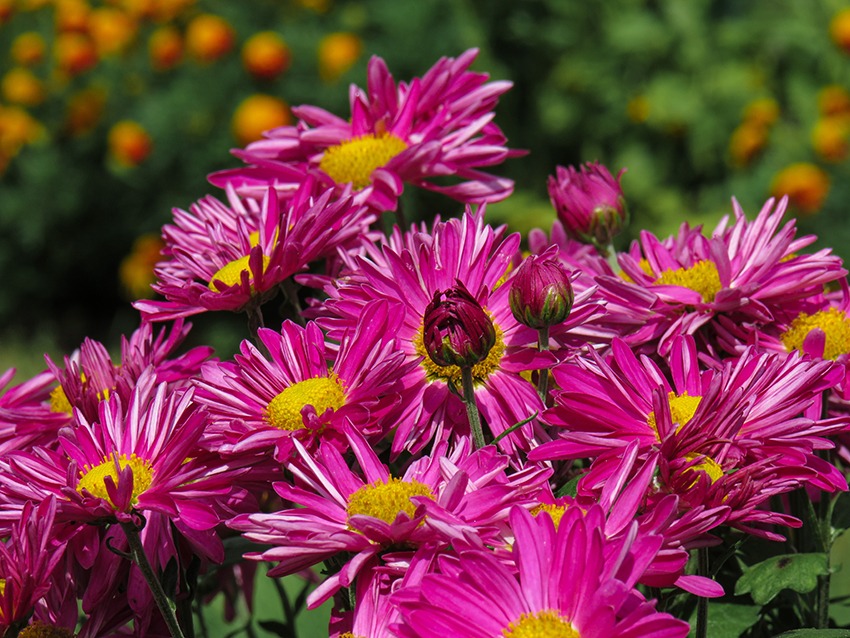Around the 8th century, the mum first appeared in Japan.
by John Bagnasco

The Japanese were so taken with this flower that they adopted a single flowered mum as the crest and official seal of the Emperor.
In November of 1883, the Pennsylvania Horticultural Society held its first Chrysanthemum Show in Horticultural Hall. At one time mum shows were more popular than rose shows.
For ease of identification the National Chrysanthemum Society divides bloom forms into 13 classes:
Class 1 – Irregular Incurve – These are the giant blooms in the mum world, often 6-8 inches across. The florets are loosely incurved and the lower florets on the flower fall in an irregular pattern giving the bloom a skirted look.
Class 2 – Reflex – In this category the florets curve downward. Some people describe the flowers as having a mop-like appearance.
Class 3 – Regular Incurve – The florets form a nice round bloom like a ball. The flower size can reach up to 4 to 6 inches in diameter.
Class 4 – Decorative
This is most common in will garden mums. The flowers have a flattened shape and florets tend to be short.
Class 5 – Intermediate Incurve – Smaller than the Irregular Incurve, with shorter, partially incurving florets and a more open appearance.
Class 6 – Pompon – The flowers have a small, globe-like bloom that is flatter when young and becomes round as it ages. The flower size can range from 1 to 4 inches.
Class 7 – Single and Semi-Double – Daisy-shaped blooms.. A central section of disk florets is surrounded by several rows of ray florets.
Class 8 – Anemone – Similar to Semi-Double chrysanthemums except that they have a raised center that looks like a pincushion.
Class 9 – Spoon – Essentially the same as the semi-double, except the ray florets are like spoons at the tips.
Class 10 – Quill – The florets in this Class are straight and tubular with open tips. The bloom is fully double with no open center.
Class 11 – Spider – Blooms have long tubular ray florets which may coil or hook at the ends.
Class 12 – Brush or Thistle – Fine tubular florets which grow parallel to the stem and resemble an artist’s paint brushes or in the thistle form the florets are flattened, twisted and dropping.
Class 13 – Unclassified or Exotic – A class for blooms that don’t fit in any of the other classes. They are often exotic, with twisted florets.
